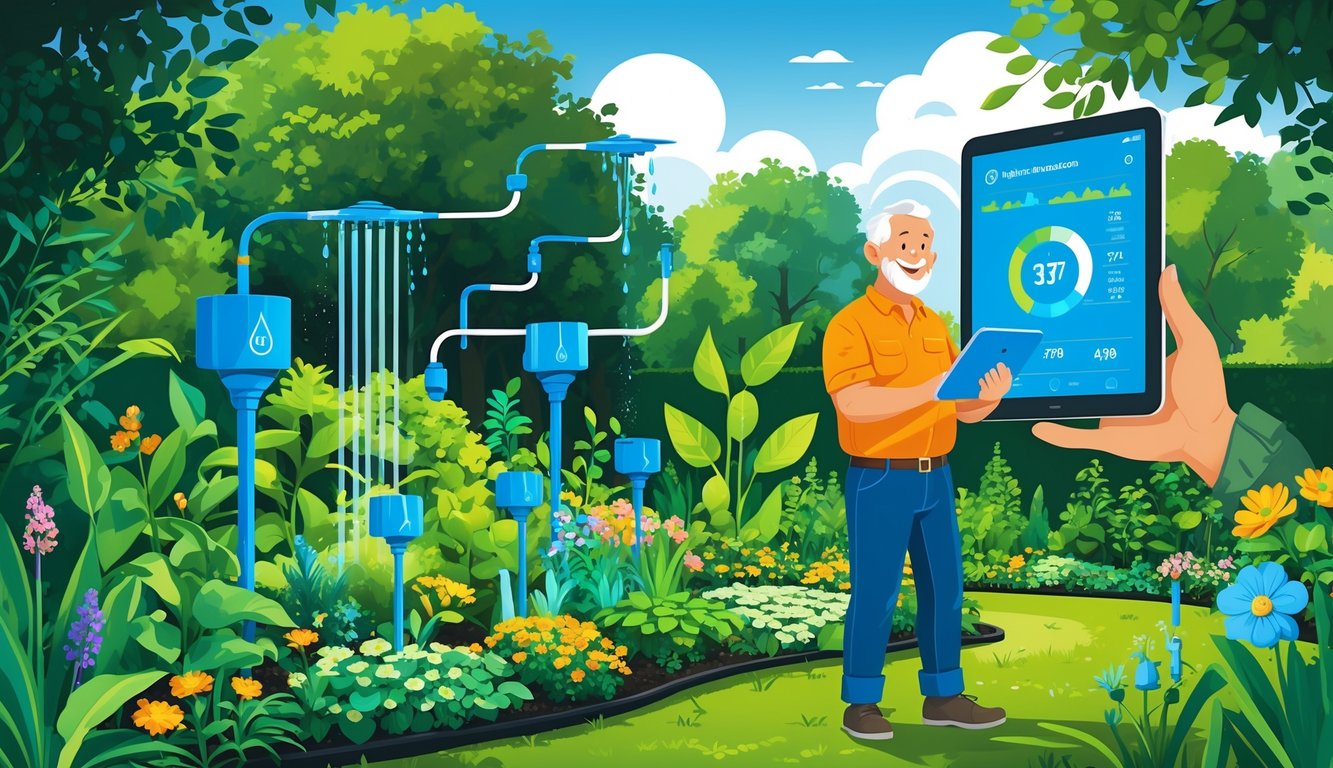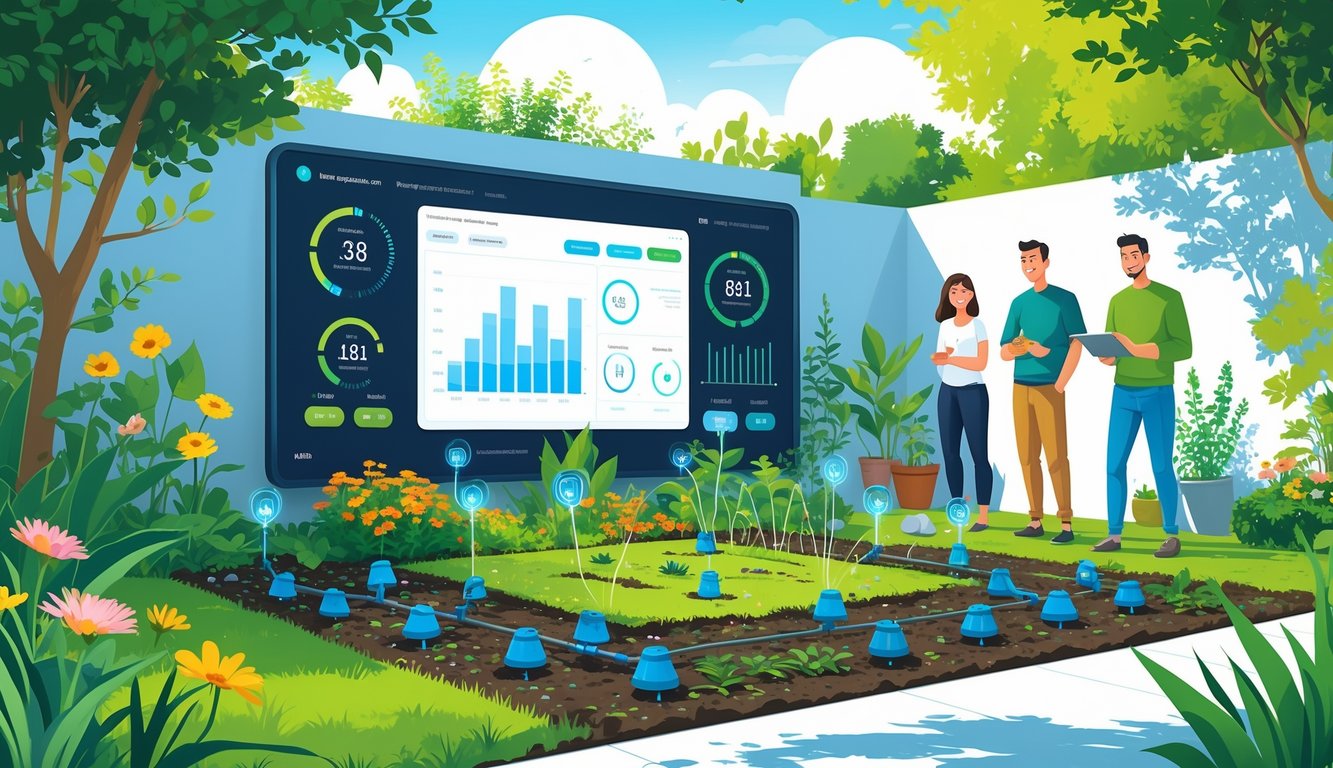
Leveraging Data for Improved Efficiency

What really drives me nuts? Everyone loves bragging about how “smart” gardens save water, but nobody actually explains what’s happening under the plastic and blinking lights. Every week, I see someone watering during a rainstorm or skipping irrigation right before a drought—so much for “smart.” It’s just raw data making my old habits look dumb.
Using Weather Intelligence and Irrigation Scheduling
It’s wild—last month, three neighbors ran sprinklers all day during a thunderstorm. If they’d used weather intelligence, their systems would’ve stayed off. Instead, gallons wasted, and they just shrugged at their “smart” timers. Real systems pull forecast data, sometimes every hour, so you don’t flood the yard on rainy days or let things wilt in a heatwave.
People running green roofs use APIs from IBM’s The Weather Company to tweak their irrigation. I’ve tried CropX and Hydrawise—my bill dropped fast. Set it so if rain’s coming (say, over 3 mm), skip the cycle. That’s it. You save money, nothing floods, and tomatoes don’t burst from random soaking—learned that the sticky way. The little savings add up, even if it feels like pennies.
Monitoring Flow Rate, Water Pressure, and Humidity
Flow rate, pressure, humidity—every “upgrade” brags about them, but I’m skeptical. I put in a Hunter flow meter, expecting miracles, but all it did was save me from a pressure spike that almost blew out my cheap tubing. If your system tracks gallons per minute, set up alerts. Last year my GPM doubled overnight—turns out, a leak behind the shed was making a swamp.
Humidity sensors? They talk big, but readings inside garden boxes swing all over the place. Use them for context, not gospel. Dr. Janet Tomlinson at CSU (she actually published in Smart Irrigation Quarterly, 2024, p.112) swears by flow and pressure metrics. Quick tip: compare your controller’s logs to your city’s meter once a month. City data always wins, no matter how slick your app looks.
Environmental Impact and Sustainable Water Management
So, here I am, staring at my water bill and thinking, wow, smart irrigation isn’t just a way to save a few bucks. Sure, the AI does its thing—no puddles, no crunchy brown spots—but honestly, it’s the boring stuff nobody brags about that matters: less runoff, fewer chemicals sneaking into the creek. That’s the real win, right? Maybe?
Reducing Environmental Footprint
Let’s be real: old sprinklers just soak the driveway and half the neighbor’s dog. I swapped to a smart system and, according to Reece (whoever that is), supposedly cut my water use in half. Fifty percent! Wild. I mean, the weather sensor pings the controller, skips a cycle, and I don’t even have to think about it. No more watering during a rainstorm or frying my plants at noon. Hydrangeas look smug, storm drains don’t flood, and my shoes stay dry.
Weird side effect: I barely use fertilizer now. Less water = fewer nutrients washing away, so streams nearby don’t get that gross algae bloom. Boman et al., 2018, says the same thing—precise monitoring, less waste, more efficient. Still, my neighbor’s system runs at 2 a.m. right before a thunderstorm. Is he just into wet socks? Who knows.
Responding to Water Scarcity and Climate Change
Climate change, yeah, that’s a thing. Rain patterns have gone completely off the rails. Here in Australia, the council waves around fines for “excessive watering,” but smart irrigation just shrugs and adjusts. My friend in Perth won’t stop talking about her soil sensor—she claims it slashed her garden’s water use by 40%. Honestly, I believe her. Most of the studies say 30–50% savings is totally normal.
When water’s scarce, every little tweak helps. I’d rather automate than just let the lawn die (again). Sustainable water management isn’t a brag anymore; it’s just what you do if you’re actually looking at your bills. I’ve set my controller to favor drought-resistant plants when things get rough, mostly because the council rebates are nice and I’m tired of resuscitating dead plants after every La Niña. Oh, and fewer puddles = fewer mosquitoes. Nobody ever mentions that, but I’m not complaining.
Challenges, Setup Costs, and Incentives
Install costs? Yeah, those hit hard. Got a quote from an “eco-friendly irrigation specialist” and nearly choked on my coffee. Rebates don’t always cover it, and picking a controller feels like assembling IKEA furniture with the wrong instructions. There’s this one review from a turf PhD who owns four gnomes—haunts me every time I consider dropping $700 on a Wi-Fi hub.
Initial Investment and Installation
Honestly, it’s become a contest—who overpaid for their “simple” upgrade? My neighbor’s proud of his $60 rain sensor, but he skipped soil probes and his yard had brown spots all summer. I get it, though. A decent smart system? Expect $400–$1,500 for stuff like valves, controllers, sensors, and that endless coil of tubing. Home Depot’s b-hyve isn’t the worst, but labor? That’ll double your bill before you know it.
Installers love to say, “Automation boosts yield and stops overwatering,” and they’ll quote the University of California’s 20–40% savings. But nobody warns you about the Wi-Fi headaches. My setup needed three hours, three tech support calls, and apparently, dollar signs in passwords are forbidden. Pro tip: Those glossy brochures never mention software subscriptions for weather data. There’s always a catch.
Government Incentives and Rebates
The day the city announced new rebates, suddenly everyone on my street became a paperwork expert. The California State Water Resources Control Board throws up to $200 at you for a smart controller—more if you qualify as low-income—but you’ll need receipts, model numbers, and probably a blood sample. The process? Not simple. I mailed three copies of an invoice because their system hated PDFs.
Some rebates are a percentage, capped at $1,000, but only if you show before-and-after photos and a smaller summer water bill. I almost skipped it, but then I saw Arizona, Colorado, and Texas homeowners saving $350–$1,200 a year. I checked. It’s true. But rebates vary by county, the money runs out, and waitlists are a nightmare. If you’re counting on that cash, read the fine print, check your model, and maybe block off an afternoon for customer service roulette.